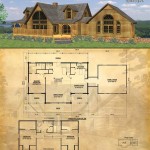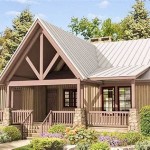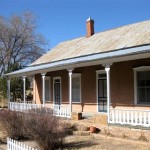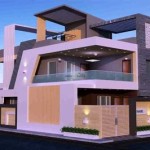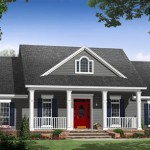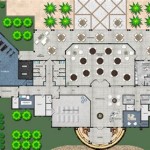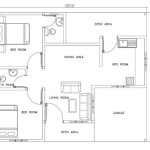Cool Tree House Plans: Designing Elevated Escapes
Tree houses, once relegated to the realm of childhood fantasy, are now increasingly sought after as unique retreats, creative workspaces, and luxurious escapes. The allure of an elevated dwelling, nestled amongst the branches and leaves, offers a connection to nature and a sense of tranquility unavailable in conventional structures. This article explores the key considerations and elements involved in creating cool tree house plans, focusing on design principles, structural integrity, and aesthetic appeal.
Planning and Tree Selection
The foundation of any successful tree house project lies in meticulous planning and careful tree selection. This initial stage significantly impacts the structural design, longevity, and overall aesthetic of the final product. A thorough assessment of the intended use, budget constraints, and desired features is paramount before embarking on the design phase.
Tree selection is not simply about choosing the largest or most aesthetically pleasing tree. It requires a comprehensive evaluation of the tree's health, species, and structural capabilities. Hardwood species, such as oak, maple, and beech, generally offer superior strength and resistance to decay compared to softwood species like pine or fir. A certified arborist should be consulted to assess the tree's health, identify any potential weaknesses, and provide guidance on minimizing any impact on the tree's well-being during construction and throughout the tree house's lifespan.
The number and arrangement of trees involved in the tree house design also influence the structural approach. A single-tree design presents unique challenges in terms of weight distribution and movement accommodation, while multi-tree designs offer increased stability and design flexibility. The canopy density and branch structure will influence the amount of natural light and shade available within the tree house, impacting the need for artificial lighting and ventilation.
Furthermore, consider the location of the tree within the overall site. Factors such as proximity to existing structures, prevailing winds, and potential hazards (e.g., power lines) must be taken into account. Local building codes and regulations should be thoroughly researched to ensure compliance and avoid potential legal issues.
Preliminary sketches and conceptual drawings are essential to visualizing the tree house within the existing tree canopy. These initial designs should explore various architectural styles, material choices, and layout options. Consider the integration of features such as balconies, rope bridges, and zip lines to enhance the overall experience and create a truly unique and engaging space.
Structural Design and Attachment Methods
The structural design of a tree house is a critical aspect that directly impacts its safety, stability, and longevity. Unlike conventional ground-based structures, tree houses must accommodate the natural movement and swaying of trees caused by wind and growth. Achieving this requires careful consideration of attachment methods, load distribution, and material selection.
Traditional attachment methods, such as bolting directly into the tree, can cause significant damage and hinder the tree's growth. Modern tree house construction techniques prioritize non-invasive attachment methods that minimize stress and allow the tree to move freely. These methods typically involve using a combination of flexible connections, dynamic support systems, and floating platforms.
Garnier Limbs, developed by German engineer Klaus Garnier, are a popular choice for supporting tree house platforms. These specialized bolts are designed to be inserted into the tree and allow for a degree of movement while providing robust support. They are typically used in conjunction with flexible joints and sliding brackets to accommodate the tree's natural swaying and growth.
Suspension systems, involving cables and pulleys, can also be used to support portions of the tree house platform. These systems allow for greater flexibility and are particularly well-suited for designs that span multiple trees. However, they require careful calibration and regular maintenance to ensure optimal performance.
The choice of building materials significantly impacts the structural integrity and overall weight of the tree house. Lightweight materials, such as cedar, redwood, and engineered lumber, are preferred to minimize the load on the tree. These materials also offer excellent resistance to weather and decay, contributing to the long-term durability of the structure. Steel framing can be incorporated for added strength and stability in larger or more complex designs.
Proper load distribution is crucial to prevent overloading individual branches or sections of the tree. The weight of the tree house should be evenly distributed across multiple attachment points to minimize stress on the tree. This can be achieved through careful planning of the platform layout and the use of strategically placed support beams.
Detailed structural drawings and calculations, prepared by a qualified structural engineer, are essential to ensure the tree house meets all safety requirements and can withstand anticipated loads, including wind, snow, and occupancy. These drawings should specify the type and size of all structural members, attachment methods, and connection details.
Aesthetic Design and Functionality
Beyond structural integrity, the aesthetic design and functionality of a tree house play a significant role in its overall appeal and usability. The design should seamlessly integrate the tree house with its natural surroundings, creating a harmonious and visually appealing structure. The interior space should be thoughtfully planned to maximize comfort and functionality, considering the intended use of the tree house.
The architectural style of the tree house can range from rustic and whimsical to modern and minimalist. The choice of style should complement the surrounding environment and reflect the owner's personal preferences. Natural materials, such as wood, stone, and bamboo, can be used to create a sense of warmth and connection to nature. Incorporating elements such as green roofs, vertical gardens, and living walls can further enhance the integration with the surrounding landscape.
The interior layout should be carefully considered to maximize the use of space and create a comfortable and functional environment. Natural light and ventilation should be prioritized to create a bright and airy atmosphere. Large windows, skylights, and operable vents can be strategically placed to optimize natural light and airflow.
Depending on the intended use, the tree house can be equipped with various amenities, such as a sleeping area, kitchenette, bathroom, and entertainment system. Careful planning is required to accommodate these features while minimizing the impact on the tree. Lightweight and space-saving appliances and fixtures are recommended.
Safety features, such as railings, handrails, and non-slip surfaces, are essential to prevent accidents and ensure the safety of occupants. These features should be designed to be both functional and aesthetically pleasing, blending seamlessly with the overall design.
Accessibility is another important consideration, particularly for tree houses intended for use by children or individuals with mobility limitations. Ramps, stairs, and ladders should be designed to be safe and easy to navigate. Consider incorporating features such as a rope ladder or a fireman's pole to add an element of adventure and excitement.
Incorporating sustainable design principles can further enhance the appeal and environmental friendliness of the tree house. Consider using recycled materials, energy-efficient lighting, and rainwater harvesting systems to minimize the environmental impact of the structure. Solar panels can be installed to provide a renewable source of electricity.
Finally, consider the addition of decorative elements, such as artwork, plants, and lighting fixtures, to personalize the space and create a welcoming and inviting atmosphere. The choice of colors and textures should complement the surrounding environment and reflect the owner's personal style.
Creating cool tree house plans requires a blend of creativity, technical expertise, and a deep appreciation for nature. By carefully considering the planning, structural design, and aesthetic elements outlined in this article, it is possible to create an elevated escape that is both safe, functional, and visually stunning. The resulting tree house can serve as a unique retreat, a creative workspace, or simply a tranquil sanctuary amidst the branches.

Tree House Plans Free Building Shed Floor Plan 1892 The Kids Simple

Treehouse Plans Custom Tree House Design By Expert Builders Supplies

20 Simple Tree House Plans And Design To Take Up This Spring

Treehouse Plans Treehousebrackets Com

20 Simple Tree House Plans And Design To Take Up This Spring

Constration Help Tree House Plans Diy

Treehouse Guides Plans To Build A Tree House

Diy Tree House Plans Ideas Designs On Dornob

Pete Nelson S Treehouse Designs For Diy Ers

Technical Drawing Treehouse Plans Tree House Designs

